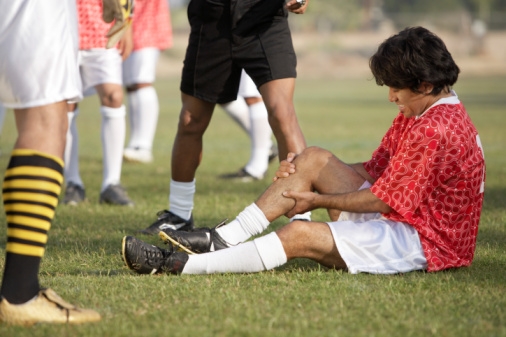
While participation in youth sports can be an enjoyable experience for children and adolescents with many potential benefits, the increasing highly competitive nature of youth sports "has fueled trends of extensive training, sport specialization, and participation in large numbers of competitive events at young ages," [3] such that overuse injuries and burnout have become common.[3,4]
While a recent position statement by one orthopedic group said that the relationship between injury and sports specialization "has not been clearly demonstrated," [3] many experts attribute the overuse injury epidemic to year-round play and kids playing and on too many teams at the same time, which take their toll on a child's growing bones, joints, and muscles. Prior to high school, most children are simply not physically mature enough to handle the stress that playing the same sport on a year-round or nearly year-round basis places on their bodies.
- According to Safe Kids Worldwide, more than 3.5 million children age fourteen and under get medical treatment for sports injuries each year. Of those, nearly half are overuse injuries, such as Sever's disease (a heel problem often associated with soccer), Osgood-Schlatter disease (knee pain common in male soccer and basketball players), gymnast's wrist, runner's knee, swimmer's shoulder, shin splints (common in soccer players and track athletes), and Little League elbow or shoulder (usually from throwing breaking balls, an ability that professional baseball players and coaches say isn't needed early in a player's career to rise to the professional level).[5]
- Twenty-five years ago, only 10 percent of the patients treated by Dr. Lyle Micheli, a pioneer in the field of treating youth sports injuries and director of the sports medicine division at Childen's Hospital Boston, were overuse injuries. Now overuse injuries represent 70 percent of the cases he sees.
- The surest path to burnout or an overuse injury [1,2] is to play a sport season after season. Your child will benefit far more in the long run if he takes a season off to play another sport or plays his chosen sport only in alternating seasons.
1. Franzen J, Pion J, et. al. Differences in physical fitness and gross motor coordination in boys aged 6-12 years specializing in one versus sampling more than one sport. Journal of Sports Sciences, DOI:10.1080/02640414.2011.642808 (available online ahead of print: 03 Jan 2012)(citing studies).
2. Mostafavifar AM, Best TM, Myer GD. Early sport specialisation, does it lead to long term problems? Br J Sports Med. 2013;47:1060-1061.
3. DiFiori JP, Benjamin HJ, Brenner J, Gregory A, Jayanthi N, Landry GL, Luke A. Overuse Injuries and Burnout in Youth Sports: A Position Statement from the American Medical Society for Sports Medicine. Clin J Sport Med 2014;24(1):3-20.
4. Sagas M. What does the science say about athletic development in children. Research Brief, University of Florida Sport Policy & Research Collaborative for the Aspen Institute Sports & Society Program's Project Play. September 13, 2013 (accessed at http://www.aspeninstitute.org/sites/default/files/content/docs/events/At...).
5. Mikalide AD, Hansen LM. Coaching our kids to fewer injuries: a report on youth sports safety. In: Worldwide SK, ed. Washington, DC. Safe Kids Worldwide; 2012.









